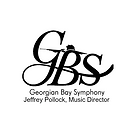Program Notes: Shostakovich to the New World
- GBS
- Mar 27, 2019
- 3 min read
Piano Concerto No 2 Dmitri Shostakovich (1906-1975)
Shortly after Stalin’s death a large number of intellectuals, including Shostakovich, were ‘rehabilitated’ by the new Soviet regime. This was a short period, 1953-1960, of relative prosperity and security for Shostakovich. In 1957 he wrote the Piano Concerto No. 2. It was written for his son Maxim’s 19th birthday. Maxim premiered the work at his graduation from the Moscow Conservatory.
Fellow composer Edison Devisov wrote that the work had no redeeming artistic merit. Other critics however praised it for its “charming simplicity, carefree spirit and lyrical warmth”. Unlike many of his other works that can be angst-ridden and serious, the Piano Concerto No. 2 is considered charming, graceful and light-hearted. Obviously one of the reasons it is his most popular work.
Symphony No. 9 “From the New World” Antonín Dvořák (1841-1904)

The Commander Neil Armstrong took Dvořák’s New World Symphony to the Moon during the Apollo 11 mission 50 years ago this July. It is rumored that Buzz Aldrin played the recording as Armstrong took his one small step for man, one giant leap for mankind.
By the 1890s, Dvorák's international fame made him among the most highly regarded of living composers. He was hired to be the director of the new National Conservatory of Music located in New York city and lived in the United States from 1892 to 1895. The Conservatory was the brainchild of music enthusiast and patron Jeannette Thurber. Her millionaire husband had amassed a fortune from his success in the grocery business, enabling Thurber to realize her ambitious dream of founding a national musical center to foster an authentically American art. Thurber's progressive ideas meant that the Conservatory welcomed women, the underprivileged, African-Americans and other minorities as students.
In an article published in the New York Herald the day before the premiere, Dvořák offered this analysis of his “New World” Symphony:
“Since I have been in this country I have been deeply interested in the national music of the Negroes and the Indians. The character, the very nature of a race is contained in its national music. For that reason my attention was at once turned in the direction of these native melodies...It is this spirit which I have tried to reproduce in my new symphony. I have not actually used any of the melodies. I have simply written original themes embodying the peculiarities of the...music and, using these themes as subjects, have developed them with all the resources of modern rhythms, harmony, counterpoint and orchestral color”.
The premiere of the “New World” Symphony was an unqualified success. Dvořák proudly informed his publisher, Simrock: “The papers say that no composer ever celebrated such a triumph. Carnegie Hall was crowded with the best people of New York, and the audience applauded so that, like visiting royalty, I had to take my bows repeatedly from the box in which I sat.”
In fact the audience greeted the ending of each movement with thunderous clapping.
Despite Dvořák’s saying he did not use any of the melodies the best -known tune (the one on English horn) sounds like a spiritual and one of his students, African American composer William Arms Fisher, later penned lyrics to it ("Goin' Home"), creating a version that then became known on its own as a latter-day spiritual. And the famous flute tune in the first movement, which seems to quote "Swing Low, Sweet Chariot," is actually a cousin of the main theme.
Dvořák was intrigued by Henry Wadsworth Longfellow's epic poem of 1854, The Song of Hiawatha. He even remarked that the Largo grew from a sketch for an operatic treatment of the epic that was never realized, while the Scherzo had been inspired by a scene "where the Indians dance."




















Comments